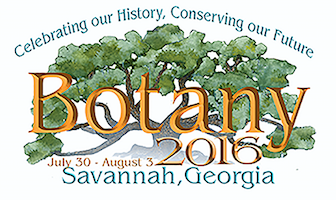| Abstract Detail
Systematics Zhigila, Daniel Andrawus [1], Akawu, Jedida Jacob [1], Ajiya, Cleophas Bila [1]. Palynological study and its relevance to systematics and pollen allergy in ornamental plants. Pollen grain morphology of 20 species belonging to 18 genera in 11 families of some ornamental plants was employed for palynology. Polleniferous materials were properly collected, identified and utilized with the view of ascertaining their relevance to systematic. Seven types of pollen apertures namely – triporate, inaperaturate, monoporate, dicolpate, monocolporate, monocolpate and tricolpate were recorded. Inaperaturate pollen was the most common among the species, especially in Bougainveilia glabra, Jatropha caucas, Cynodon dactylon and Plumeria alba. The analysis of mean polar and equatorial measurement i.e. the pollen sizes showed that the largest pollen was recorded in Thevetia peruviana (782.69 μm2) and the smallest pollen was recorded in Terminalia catappa (27.62 μm2). The mean density of pollens was found to be highest in Moringa oleifera (20.60ñ1.21 mm2) and the lowest mean density was recorded in Ixora casei (1.20ñ0.20 mm2). Exine thickness ranged from 2.86 μm as seen in Jatropha caucas to 0.30 μm as seen in Breynia viscosa. These palynological features were considered important to be used as an aid in taxonomy and pollinosis and it has given new dimensions in palynology.
Log in to add this item to your schedule
1 - Gombe State University, Biological Sciences, Tudun Wada, PMB 127 , Gombe, Gombe, +234, Nigeria
Keywords:
Palynology
Pollinosis
Systematics
plants
Ornamental.
Presentation Type: Oral Paper
Session: 47, Systematic Methods, Herbarium Digitization & Floristics
Location: 203/Savannah International Trade and Convention Center
Date: Wednesday, August 3rd, 2016
Time: 1:30 PM
Number: 47001
Abstract ID:56
Candidate for Awards:None |



